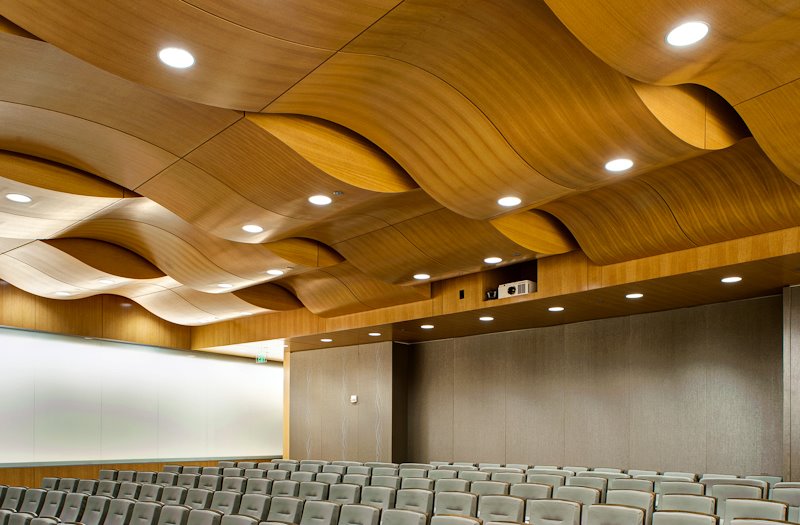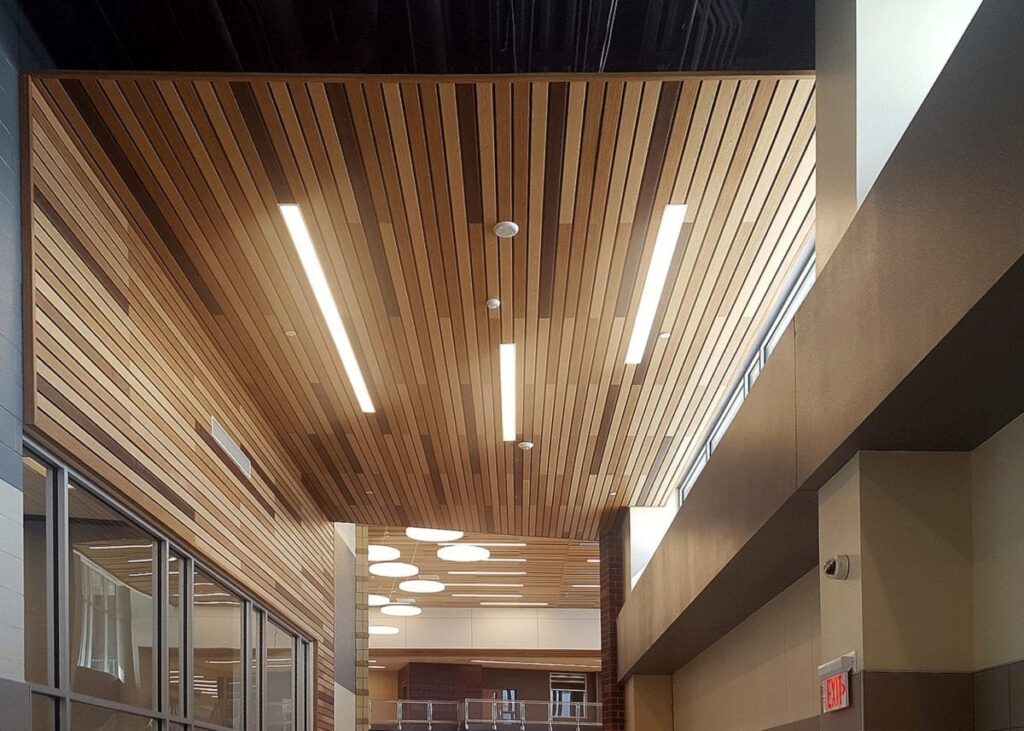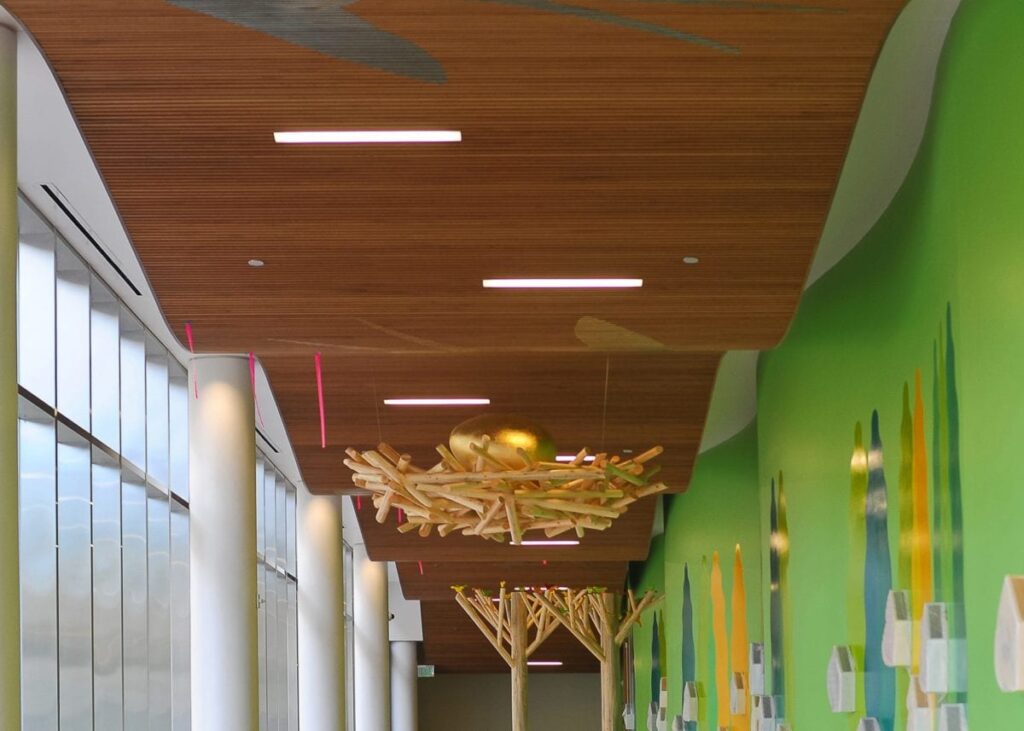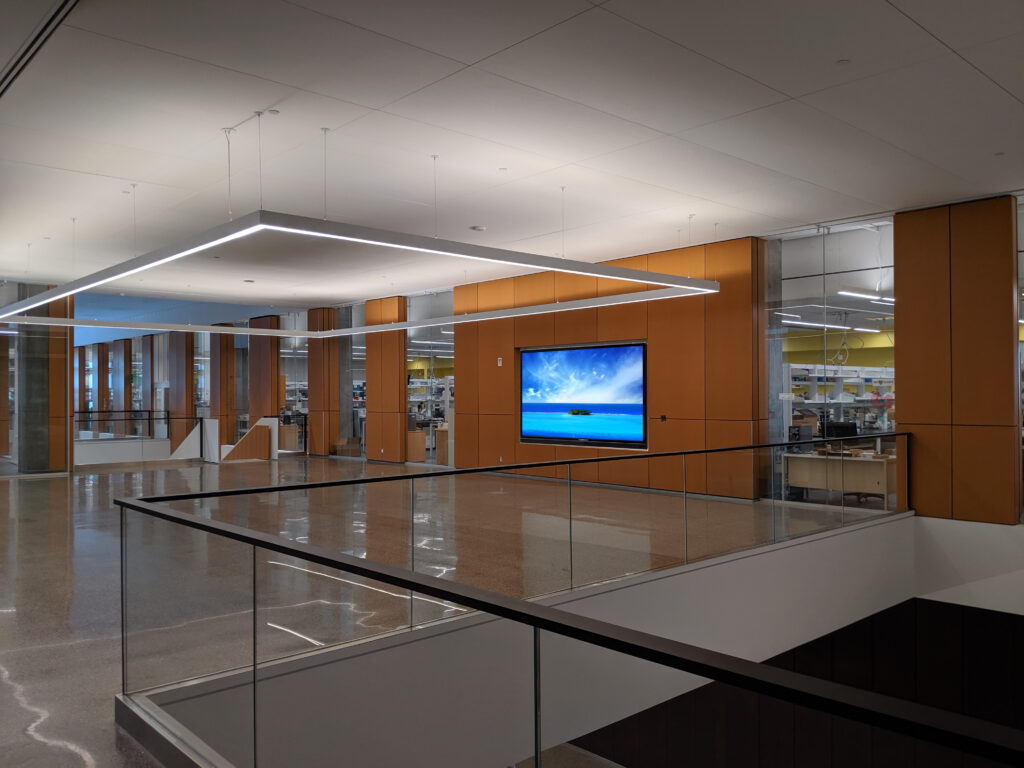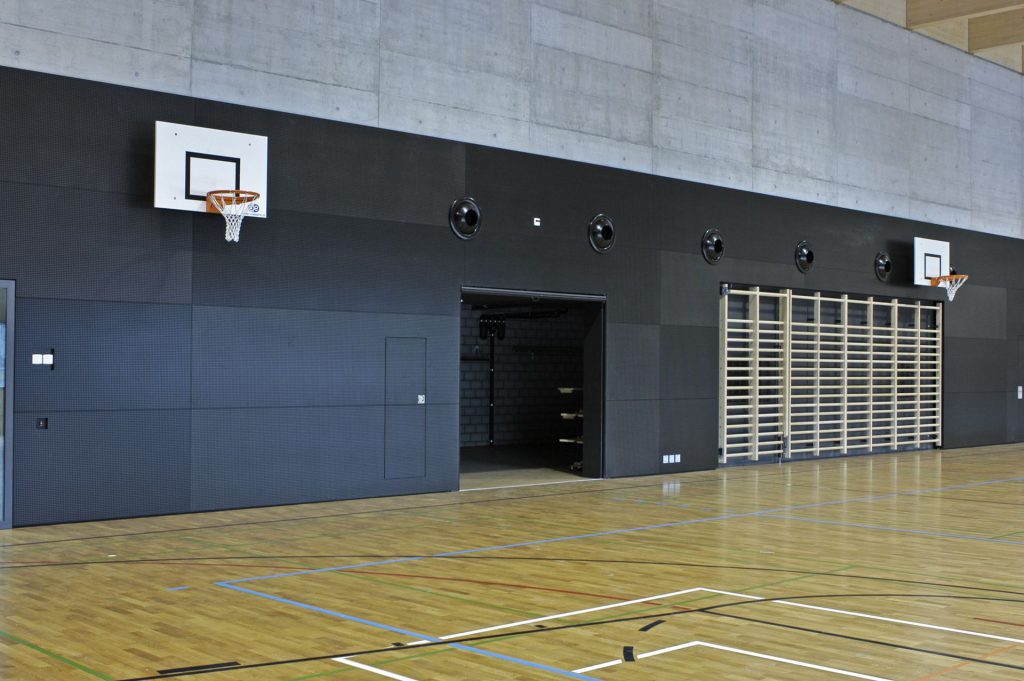Wood is a natural choice for warm, inviting, spectacular architecture, with the capacity to provide superb acoustic solutions…
Here are some key points to ponder when selecting the perfect wood product for your design:
Wood and Sound...
Wood is composed of many small cellular tubes that are predominantly filled with air. The natural composition of the material allows for wood to act as an effective acoustical insulator and provides it with the ability to dampen vibrations. These sound-dampening characteristics allow for wood construction elements to be specified where sound insulation or amplification is required, such as libraries and auditoriums. Another important acoustical property of wood is its ability to limit impact noise transmission, an issue commonly associated with harder, more dense materials and construction systems.
Lets talk about sound absorption...
Sound absorption is the dampening of noise in a space, and it’s typically used in spaces that require noise to be controlled or eliminated. Many types of wooden wall panels and wooden ceiling panels are designed to help with this, minimizing sound in any given environment. In its natural state, wood almost entirely reflects sound. However, when perforations are made in wooden wall panels or wooden ceiling panels, then they absorb sound and deaden noise. So if you’re looking for the beautiful wood features that help with acoustics, there are some primary elements that will improve acoustic effectiveness.
Excellent for Schools and Learning Environments
Wood provides warmth in sterile environments like schools. Recent studies show that natural materials better promote learning in classroom environments when compared to stale, sterile, cleanroom-esque environments.
Studies have shown that a clean, comfortable learning environment is more likely to promote educational success for students. From the youngest student in pre-kindergarten to the oldest student finally getting their high school diploma, receiving their coveted college degree, or simply attending continuing education courses, every learner deserves a space that encourages their educational success. Acoustical wood wall systems can help.
Engineering brings it forward...
Every architectural design is different, and while sound absorption isn’t an essential component for some projects, it can be of paramount importance for others. As more and more is understood about the health implications of good acoustic design and the integration of healthy sustainable environmentally harvested products.
Slotted or Grooved Panels
Slotting or grooving wood panels is typically less expensive and has a different aesthetic than microperforation. The grooves allow sound to pass through the core and be absorbed by the acoustical media behind it. A slotted panel can achieve an NRC of up to 0.85 with a 2" acoustical blanket.
Where to use Perforated Wood panels ...
Micro perforations are the small holes in acoustically engineered panels which allow the sound to travel through the wood and reach the insulation or airspace. Since the holes are extremely small, they are not visible from a normal viewing distance. These panels are high performing and are adaptable to both walls and ceilings. Particularly effective in hallways, on columns, in auditoriums and lecture halls, and on ceilings. They are a more cost efficient product than linear wood, and come in a wide variety of NRC (noise reduction coefficient) ratings, colors, and species.
What about Linear Wood Grilles?
A grille system is quite lovely to look at and is by nature almost transparent to sound (and can even be 'transparent' to sprinkler systems). With some acoustical media or insulation behind it, a wood grille system can achieve up to an NRC of 0.80
This is an outstanding performance and the look of the solid rails gives an unparalleled finish. 😊

